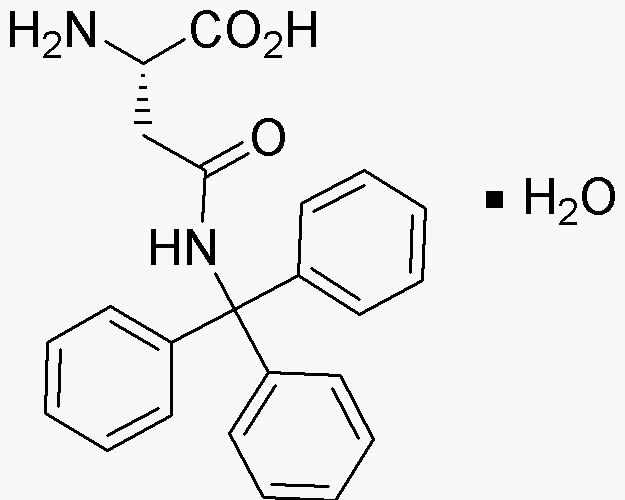Ng-Trityl-L-asparagine hydrate is widely utilized in research focused on:
- Peptide Synthesis: This compound serves as a key building block in the synthesis of peptides, particularly in the development of pharmaceuticals and biologically active compounds.
- Protein Engineering: It is used in the modification of proteins, enhancing their stability and functionality, which is crucial in biotechnological applications.
- Drug Development: Researchers leverage its properties to design and optimize drug candidates, particularly in targeting specific biological pathways.
- Biochemical Research: This compound aids in studying enzyme activities and interactions, providing insights into metabolic processes and disease mechanisms.
- Diagnostic Applications: It is utilized in the development of diagnostic tools, enhancing the detection of various diseases through improved assay sensitivity.
General Information
Properties
Safety and Regulations
Applications
Ng-Trityl-L-asparagine hydrate is widely utilized in research focused on:
- Peptide Synthesis: This compound serves as a key building block in the synthesis of peptides, particularly in the development of pharmaceuticals and biologically active compounds.
- Protein Engineering: It is used in the modification of proteins, enhancing their stability and functionality, which is crucial in biotechnological applications.
- Drug Development: Researchers leverage its properties to design and optimize drug candidates, particularly in targeting specific biological pathways.
- Biochemical Research: This compound aids in studying enzyme activities and interactions, providing insights into metabolic processes and disease mechanisms.
- Diagnostic Applications: It is utilized in the development of diagnostic tools, enhancing the detection of various diseases through improved assay sensitivity.
Documents
Safety Data Sheets (SDS)
The SDS provides comprehensive safety information on handling, storage, and disposal of the product.
Product Specification (PS)
The PS provides a comprehensive breakdown of the product’s properties, including chemical composition, physical state, purity, and storage requirements. It also details acceptable quality ranges and the product's intended applications.
Certificates of Analysis (COA)
Search for Certificates of Analysis (COA) by entering the products Lot Number. Lot and Batch Numbers can be found on a product’s label following the words ‘Lot’ or ‘Batch’.
Número de catálogo
Número de lote/lote
Certificates Of Origin (COO)
This COO confirms the country where the product was manufactured, and also details the materials and components used in it and whether it is derived from natural, synthetic, or other specific sources. This certificate may be required for customs, trade, and regulatory compliance.
Número de catálogo
Número de lote/lote
Safety Data Sheets (SDS)
The SDS provides comprehensive safety information on handling, storage, and disposal of the product.
DownloadProduct Specification (PS)
The PS provides a comprehensive breakdown of the product’s properties, including chemical composition, physical state, purity, and storage requirements. It also details acceptable quality ranges and the product's intended applications.
DownloadCertificates of Analysis (COA)
Search for Certificates of Analysis (COA) by entering the products Lot Number. Lot and Batch Numbers can be found on a product’s label following the words ‘Lot’ or ‘Batch’.
Número de catálogo
Número de lote/lote
Certificates Of Origin (COO)
This COO confirms the country where the product was manufactured, and also details the materials and components used in it and whether it is derived from natural, synthetic, or other specific sources. This certificate may be required for customs, trade, and regulatory compliance.


